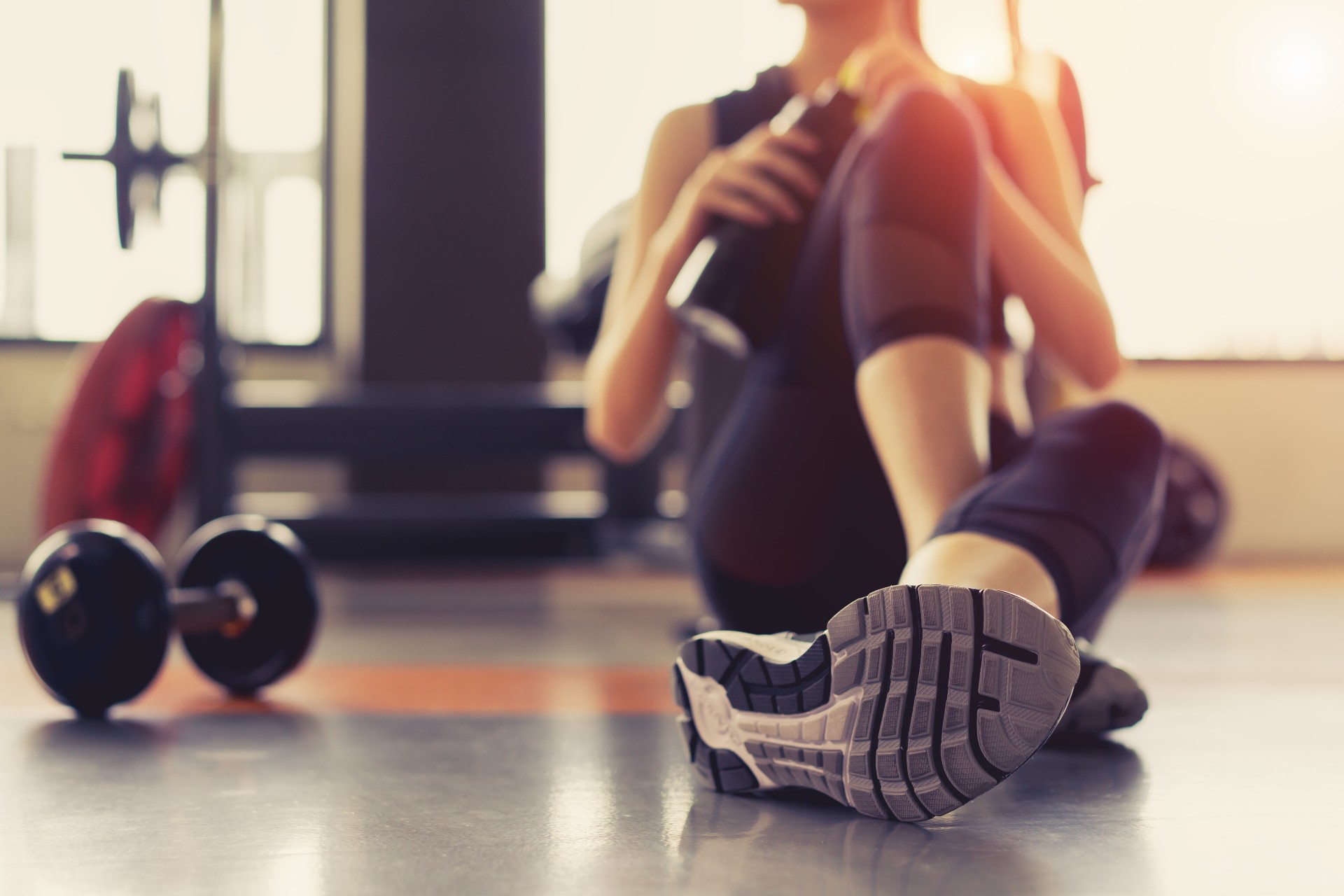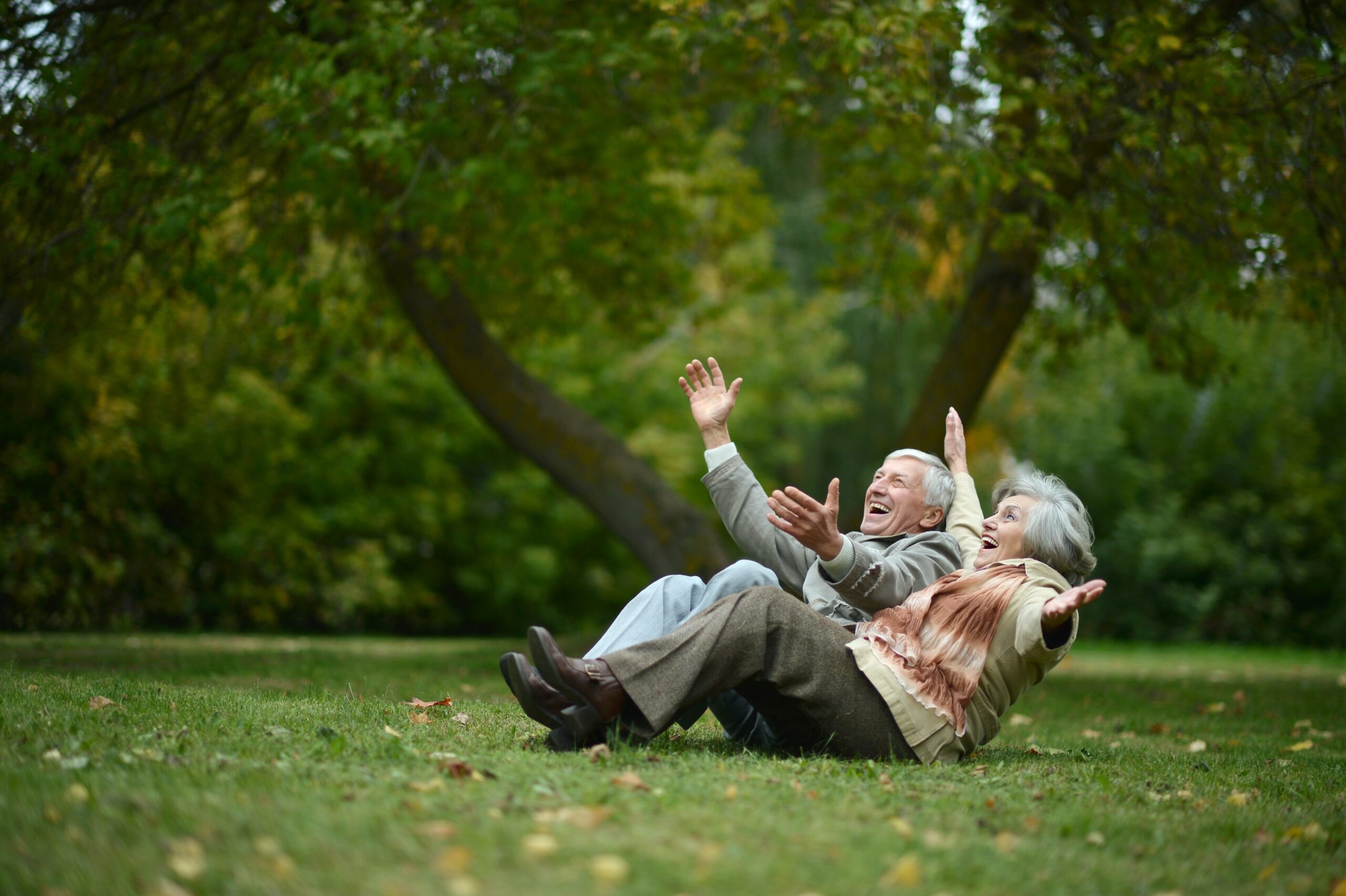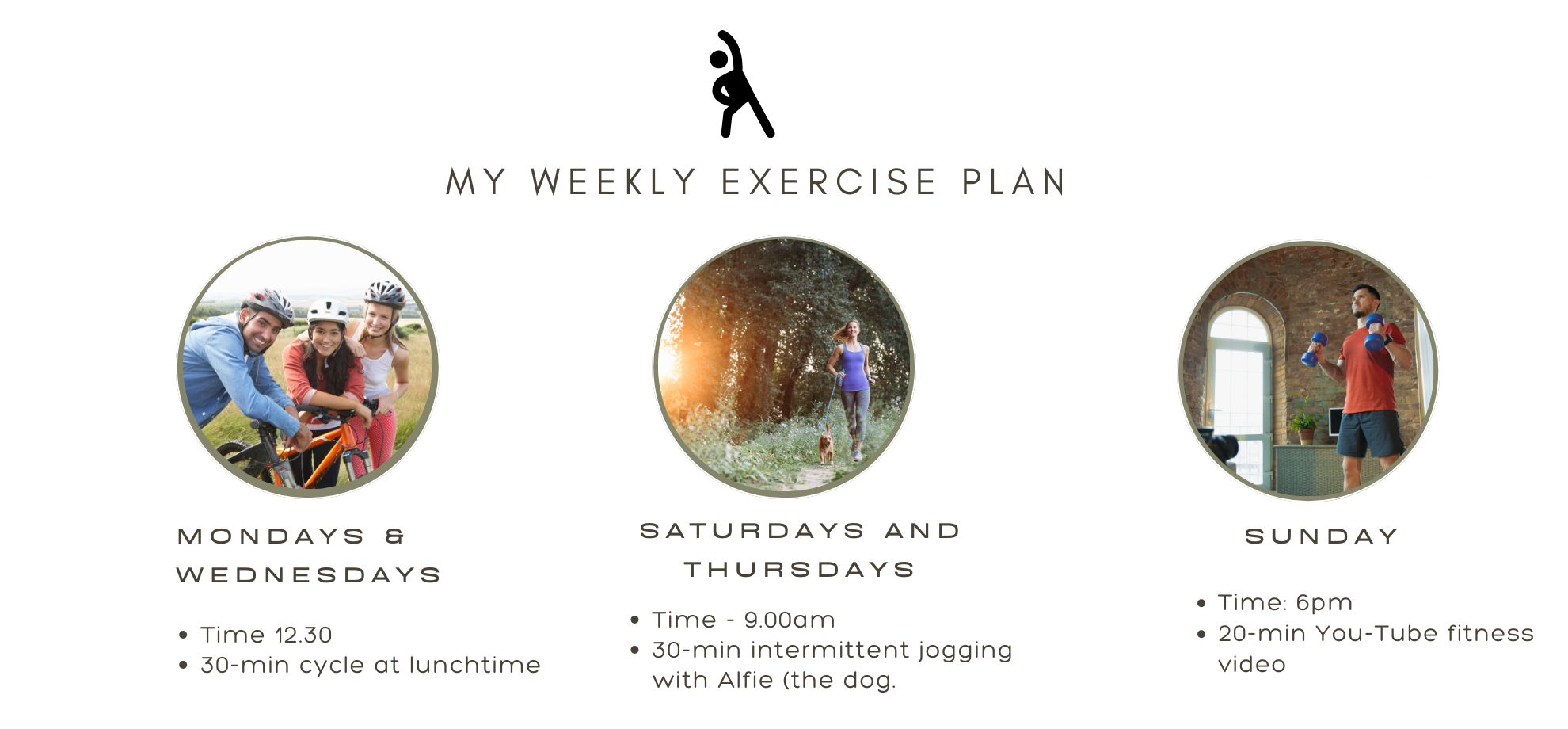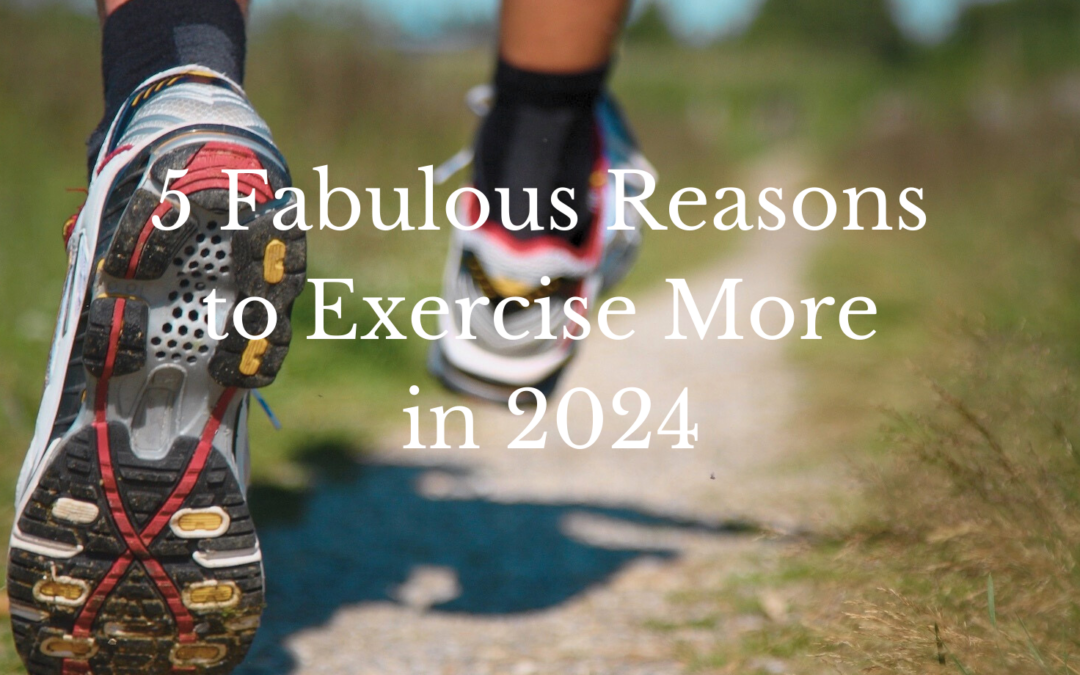Article Overview
- What is areobic exercixe.
- 5 benefits to regular areobic exercise
- How much exercise do I need?
- The 1,2 3, of how to get started.
- My weekly exercise plan.
In January, many of us reflect on how much exercise we regularly do and then pledge to ourselves to do more. How’s that going so far? This article outlines some key benefits of exercise as well as practical advice to help ensure your exercise routine is a success this year.
There are so many benefits to exercise. Regular strengthening, stretching, balance, and aerobic exercises improve fitness and health and support a longer lifespan.
In contrast, inactivity correlates with heart disease, stroke, some cancers and diabetes. According to official government statistics (ONS, 2022), ischaemic heart disease is the leading cause of death among males and the second leading cause of death among females. Regular physical exercise, particularly aerobic exercise, has many positive effects on health, including benefits to the cardiovascular system.
Exercise is almost certainly the most beneficial, accessible form of disease prevention available. Let’s do it!
What is Aerobic Exercise?

American College of Sports Medicine (ACSM) defines aerobic exercise as “any activity that uses large muscle groups, can be maintained continuously, and is rhythmic in nature”. Aerobic exercise increases breathing and heart rate to help pump oxygen-rich blood to working muscles in the arms and legs. Therefore, regular aerobic exercise improves heart and lung function, which helps to strengthen the cardiovascular system and keep us fit and healthy.
5 Fabulous Benefits of Aerobic Exercise.
1. It strengthens your heart.
The heart is a muscle that pumps blood around your body. The heart ensures oxygenated blood reaches working muscle and waste products, such as lactate, are taken away. This process enables you to keep exercising. When you workout aerobically, your heart gets as much of a workout as your legs and other muscles. When you exercise repeatedly over time, your heart muscle is able to work harder as it grows stronger – and so can you! You feel this improvement in your fitness as you become increasingly able to manage longer, more intense activity.
The evidence for action on physical inactivity is convincing, cost effective and practical. Approximately 81% of adolescents and 27.5% of adults don’t meet WHO’s recommended levels of physical activity.
2. It helps reduce blood pressure (hypertension)
Hypertension affects 25% of the world’s population. It is a risk factor for cardiovascular disorders and other diseases. Exercise can effectively lower resting blood pressure. Post-exercise reductions in blood pressure range may reduce the risk of stroke by 6-14%, and the risk of coronary heart disease by 4-9%. This indicates the importance of acute exercise as a non-pharmacological treatment of hypertension.
While it’s important to have your blood pressure checked regularly, integrating aerobic exercise into your life is a positive step to the prevention of cardiovascular disease.
3. It helps to control your blood sugar levels.
Our blood sugar levels rise and fall throughout the day to ensure that our brain and other metabolic tissues receive a regular energy supply. However, big swings in blood sugar levels are associated with an increased risk of heart disease, stroke, and type 2 diabetes. Exercising for approximately 1-2 hours after eating can significantly help reduce blood sugar levels. In addition, reducing blood sugar peaks and troughs can help you to maintain a healthy weight.
70% of all future healthcare costs will be spent on treating illness resulting from physical inactivity. ~500M people will develop heart disease, obesity, diabetes, or other noncommunicable diseases this decade.
4. Better Sleep.
According to the Sleep Foundation, exercise can alleviate sleep-related problems by improving sleep quality, reducing the time it takes to fall asleep, and time spent awake during the night.
Exercise is associated with improvements in anxiety and depression. Regular exercise helps us feel calm and fall asleep more easily.
So, the more you move, the better you snooze!
5. Improved Mental Health; anxiety and depression
The NHS, MIND and the Mental Health Foundation all have information that explains how exercise can improve mental health. Several factors support the connection between mental health and exercise including; improved sleep, self-confidence, social interaction, stress management, and health management.
“The benefits of regular physical activity on health, longevity and well-being easily surpass the effectiveness of any drugs or medical treatment”
How Much Exercise do I Need?

The World Health Organisation (WHO) guidelines suggest the following physical activity for health.
Adults aged between 19 and 64 years should do at least 150–300 minutes of moderate-intensity aerobic physical activity or at least 75–150 minutes of vigorous-intensity aerobic physical activity, or an equivalent combination of moderate- and vigorous-intensity activity throughout the week
For more information on physical activity guidelines, as well as recommendations for other age groups or people with specific needs visit the WHO website
Do you exercise regularly but your weight just stays the same (or even increases?)
Changes in body weight, the food we eat, stress, hormonal changes, medications and the environment around us can all effect the efficiency of our metabolism
Are you ready to fire up your metabolism?

How Do I Get Started?
Many physical activities are aerobic, such as jogging, football, tennis, cycling, and aerobics (of course!). However, many of us prefer more relaxed, fun activities that we can easily integrate into our daily routine. These activities include gardening, climbing stairs, brisk walking, and dancing.


![]() Take a minute or two to write a list of activities that would suit your level of fitness and fit easily into your lifestyle? Choose activities that you will enjoy.
Take a minute or two to write a list of activities that would suit your level of fitness and fit easily into your lifestyle? Choose activities that you will enjoy.
![]() From your list, choose 2 or 3 different activities (you may not have more than this on your list – that’s OK). Your choices could be anything that involves physical activity. Examples include 30 minutes of cycling, intermittent jogging with the dog, or an online YouTube workout. What are your choices?
From your list, choose 2 or 3 different activities (you may not have more than this on your list – that’s OK). Your choices could be anything that involves physical activity. Examples include 30 minutes of cycling, intermittent jogging with the dog, or an online YouTube workout. What are your choices?
![]() Once you’ve decided what activities you are going to do, you need work out how to integrate them into your routine. Highlight days and times of the week when activity could fit into your routine most easily. Decide what you are going to do at each time and schedule these times into your diary so a reminder will pop up.
Once you’ve decided what activities you are going to do, you need work out how to integrate them into your routine. Highlight days and times of the week when activity could fit into your routine most easily. Decide what you are going to do at each time and schedule these times into your diary so a reminder will pop up.
Contratulations you have an exercise routine!!


Book A Consultation with Juliet
Nutrition Articles
Is Coffee Good For Your Health?
Why do we all love coffee? 5 health benefits to drinking coffee 5 health cautions about coffee. How much coffee? Favourate things about coffee Many of us reach for the first coffee of the day, to give us the kick-start we need to navigate the day ahead. Coffee...
Movember Focus: Supporting Young Men
It's Movember, a time when we focus on men's health. This annual event first started in Australia in 2003, when a group of men decided to grow a moustache to help raise awareness about prostate cancer and depression. Since then, ‘Movember’ has evolved into a global...
Treatment for Skin Conditions: Psoriasis, Eczema, Rosacea, Acne
60%Of people in the UK will suffer from a skin condition at some point. in their life25%Of people visit their GP for support with a skin condition each year.64%Of people that suffer from a skin condition use over-the-counter treatments to try to relieve symptoms but...
Bibliography
Canuto PM, Nogueira ID, Cunha ES, Ferreira GM, Pinto KM, Costa FA, et al. Influence of resistance training performed at different intensities and same work volume over BP of elderly hypertensive female patients. Rev Bras Med Esporte. 2011;17(4):246–249.
Cario-Rivera E, Monada-Jimenez J et al (2016) Effects of Exercise on Blood Pressure: A Meta-Analytic Investigation. Arq Bras Cardiol. 106(5): 422–433. doi: 10.5935/abc.20160064 REF
Department of Health . On the state of public health: annual report of the Chief Medical Officer. London: Department of Health; 2009. REF
Langhammer B, Bergland A, Rydwik E (2018). The Importance of Physical Activity Exercise among Older People. Biomed Res Int.. doi: 10.1155/2018/7856823
Office for National Statistics (2022) Death registration summary statistics, England and Wales: 2022. REF
Pacheco D, 2023 Exercise and Sleep. The Sleep Foundation REF
World Health Organisation (WHO) Global Status Report on Physical Activity 2022 ISBN: 9789240059153




